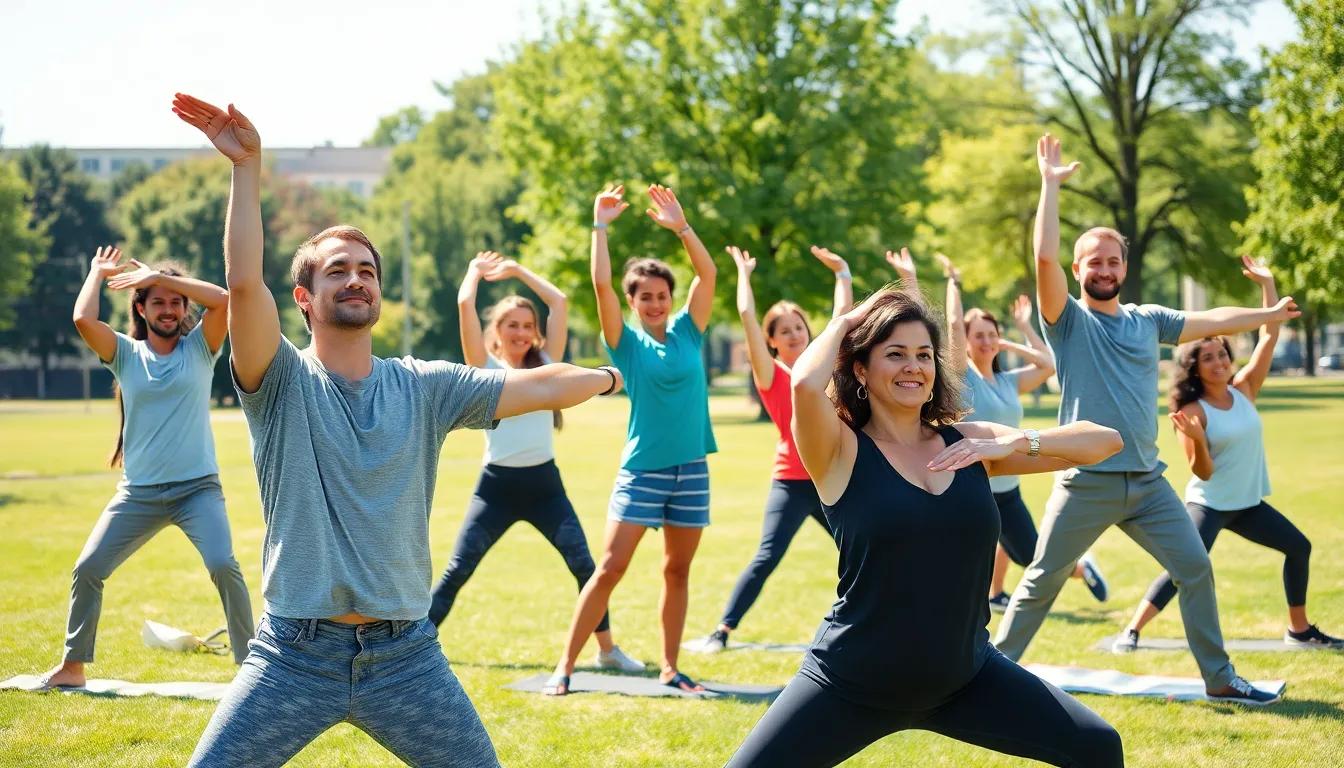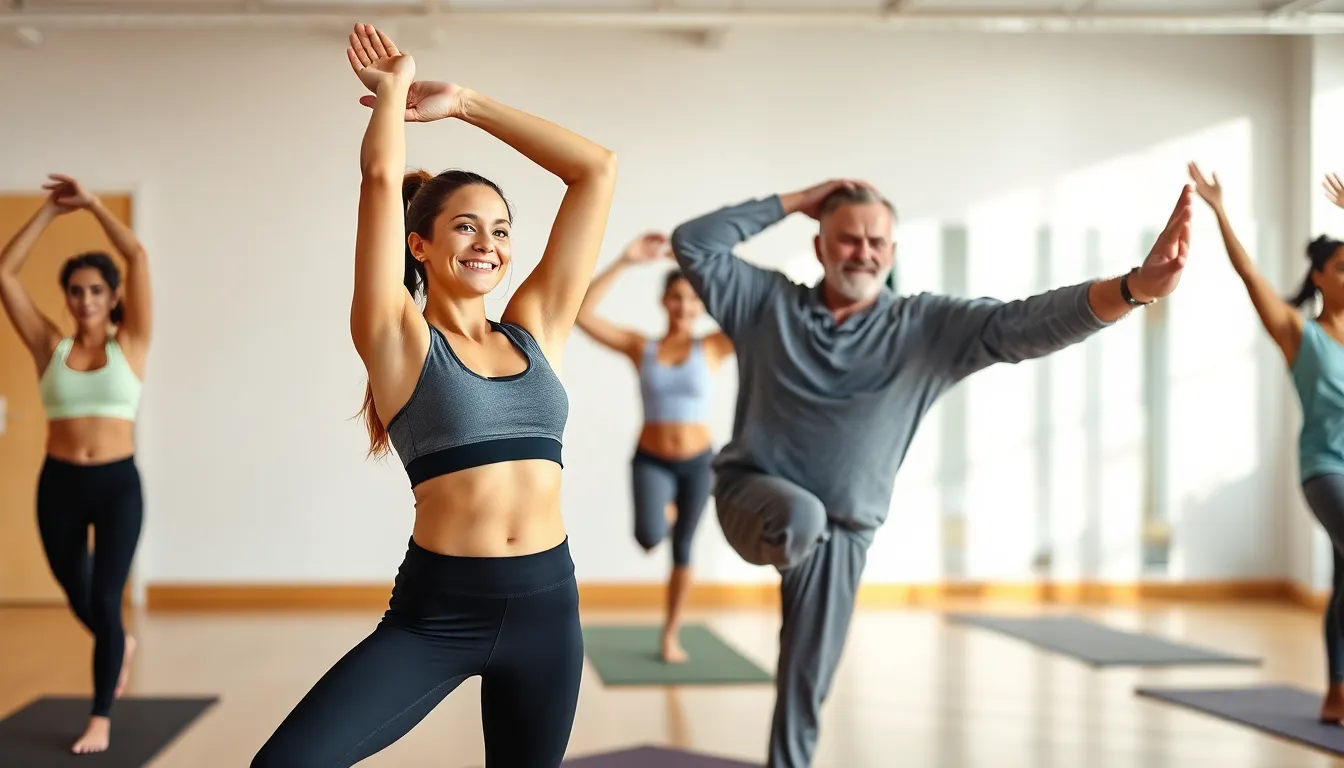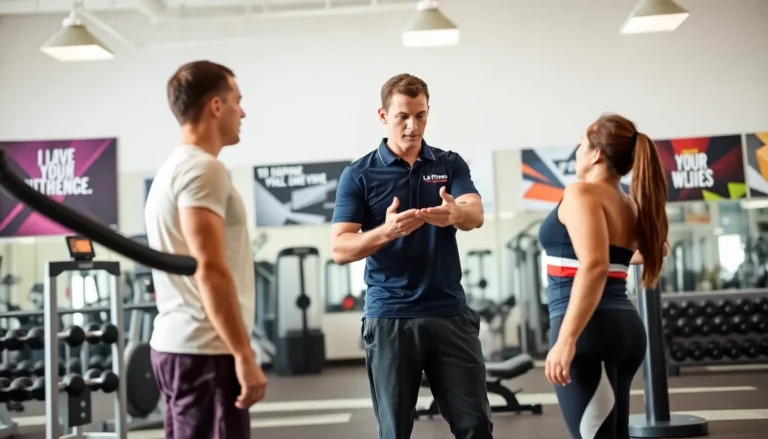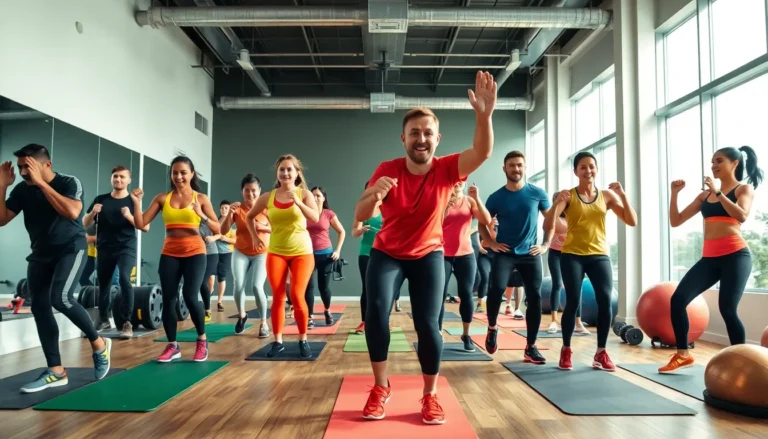Flexibility exercises might not sound like the most thrilling part of a workout routine, but they’re the unsung heroes of fitness. Imagine your body as a rubber band—without regular stretching, it risks snapping under pressure. Who wants that? Keeping muscles limber not only enhances performance but also helps prevent injuries, so you can keep showing off those impressive moves on the dance floor or during your weekend soccer match.
Table of Contents
ToggleWhat Are Flexibility Exercises?
Flexibility exercises comprise movements designed to improve the range of motion in joints and muscles. Stretching activities enhance muscle elasticity, contributing to greater flexibility, which is crucial for optimal physical performance. These exercises come in various forms, including static stretching, dynamic stretching, and proprioceptive neuromuscular facilitation (PNF).
Static stretching involves holding a position for a set duration, typically 15 to 60 seconds. This method encourages muscle relaxation, promoting increased flexibility over time. Dynamic stretching incorporates movement, often mimicking the activity to be performed, which prepares the body for exercise. PNF involves a combination of stretching and contracting muscles, often used in rehabilitation settings for enhanced flexibility gains.
Research shows that incorporating flexibility exercises into a routine can significantly lower injury risks. For instance, athletes who maintain flexibility tend to recover faster from injuries and perform better in their respective sports. Also, flexibility exercises support overall fitness by improving posture and easing muscle tension.
Regular practice of flexibility exercises aids in muscle recovery after intense physical activity. Including these exercises in warm-up or cool-down routines proves beneficial. Ultimately, flexibility plays a vital role in an individual’s physical health and well-being, making these exercises essential in any fitness program.
Benefits of Flexibility Exercises

Flexibility exercises offer numerous benefits that enhance physical health. These movements increase joint and muscle range, improve overall well-being, and support athletic performance.
Improved Range of Motion
Improved range of motion results from consistent flexibility exercises. Enhanced elasticity in muscles leads to smoother joint movements. Individuals experience greater comfort and ease during everyday activities. Increased flexibility allows for deeper squats, higher kicks, and more fluid dancing. Studies confirm that a greater range of motion contributes significantly to overall physical capabilities.
Injury Prevention
Injury prevention is another critical benefit of flexibility exercises. Holding stretches reduces muscle tension, which lowers the chances of strains and sprains. Stretching regularly promotes better circulation, warming up muscles before physical activities. A flexible body responds more effectively to sudden movements, minimizing injury risks. Research shows individuals practicing flexibility exercises experience a notable decrease in workout-related injuries.
Enhanced Performance
Enhanced performance directly correlates with flexibility training. Greater flexibility contributes to improved strength and power in athletic movements. Athletes who integrate flexibility exercises report better agility and quicker reaction times. Stretching before activities primes the muscles, leading to optimal performance levels. Evidence supports that enhanced flexibility aids in balance and coordination, vital for various sports.
Types of Flexibility Exercises
Different types of flexibility exercises cater to various needs and preferences. These exercises include static stretching, dynamic stretching, and proprioceptive neuromuscular facilitation (PNF).
Static Stretching
Static stretching involves holding a specific position for a fixed duration. Individuals typically perform this type of stretching post-workout to promote relaxation and enhance flexibility. Muscles benefit from the sustained stretch, leading to improved blood flow and recovery. For instance, a common static stretch is the seated hamstring stretch, where one reaches for the toes while seated. Consistent practice of static stretches can increase overall muscle elasticity and support long-term injury prevention.
Dynamic Stretching
Dynamic stretching incorporates movement to prepare the body for physical activity. These exercises mimic the motions of the activities to follow, activating muscles and improving range of motion. An example is leg swings, where one swings a leg forward and backward to warm up hip joints. Engaging in dynamic stretching before a workout enhances coordination and agility, making it easier to perform exercises effectively. Regular dynamic stretches can improve overall athletic performance and lower injury risks.
Proprioceptive Neuromuscular Facilitation (PNF)
Proprioceptive neuromuscular facilitation (PNF) combines stretching and muscle contractions to enhance flexibility. In this technique, an individual stretches a muscle, then contracts it against resistance. A partner or trainer often assists during this process to maximize effectiveness. One popular PNF stretch involves the partner applying resistance while the person pushes against it before relaxing into a deeper stretch. Integrating PNF into a fitness routine can lead to significant gains in flexibility and rehabilitation benefits, making it a favored method among athletes and coaches.
How to Incorporate Flexibility Exercises into Your Routine
Flexibility exercises enhance performance and reduce injury risks. Incorporating them effectively requires attention to warm-ups, frequency, and safety.
Warm-Up and Cool-Down
Begin each session with dynamic stretching to prepare muscles for activity. Incorporate movements like arm circles, leg swings, and torso twists for 5 to 10 minutes. Post-exercise, static stretching should follow, holding each position for 15 to 30 seconds. This encourages muscle relaxation and recovery, reducing stiffness. Focusing on major muscle groups, such as hamstrings, quadriceps, and shoulders, is essential. Cooling down promotes flexibility gains and aids in injury prevention.
Frequency and Duration
Aim for flexibility training at least 2 to 3 times per week. Consistency maximizes benefits and supports overall fitness. Each session can last between 10 and 30 minutes, depending on goals and fitness levels. Engaging in various exercises ensures comprehensive coverage of muscle groups. Balancing flexibility training with other fitness components also fosters a well-rounded routine. Tracking progress can help individuals stay motivated and achieve milestones.
Safety Tips
Prioritize safety to avoid injuries while performing flexibility exercises. Start at a level appropriate for individual fitness and gradually increase intensity. Listen to the body, adjusting movements if discomfort occurs. Maintain proper posture during stretches to maximize effectiveness and minimize strain. Avoid bouncing or jerky motions; this can cause muscle injuries. Consulting with a fitness professional can provide personalized guidance and enhance safety in practice.
Flexibility exercises are essential for anyone looking to improve their physical health and athletic performance. By regularly incorporating these movements into a fitness routine, individuals can enhance their range of motion and significantly reduce the risk of injuries. Whether it’s through static stretching, dynamic stretching, or PNF, each method offers unique benefits that contribute to overall well-being.
The key to reaping these rewards lies in consistency and proper technique. As flexibility training becomes a regular part of exercise regimens, it not only promotes better circulation and muscle relaxation but also supports a more active lifestyle. Prioritizing flexibility is a simple yet effective way to ensure long-term health and enjoyment in various physical activities.




